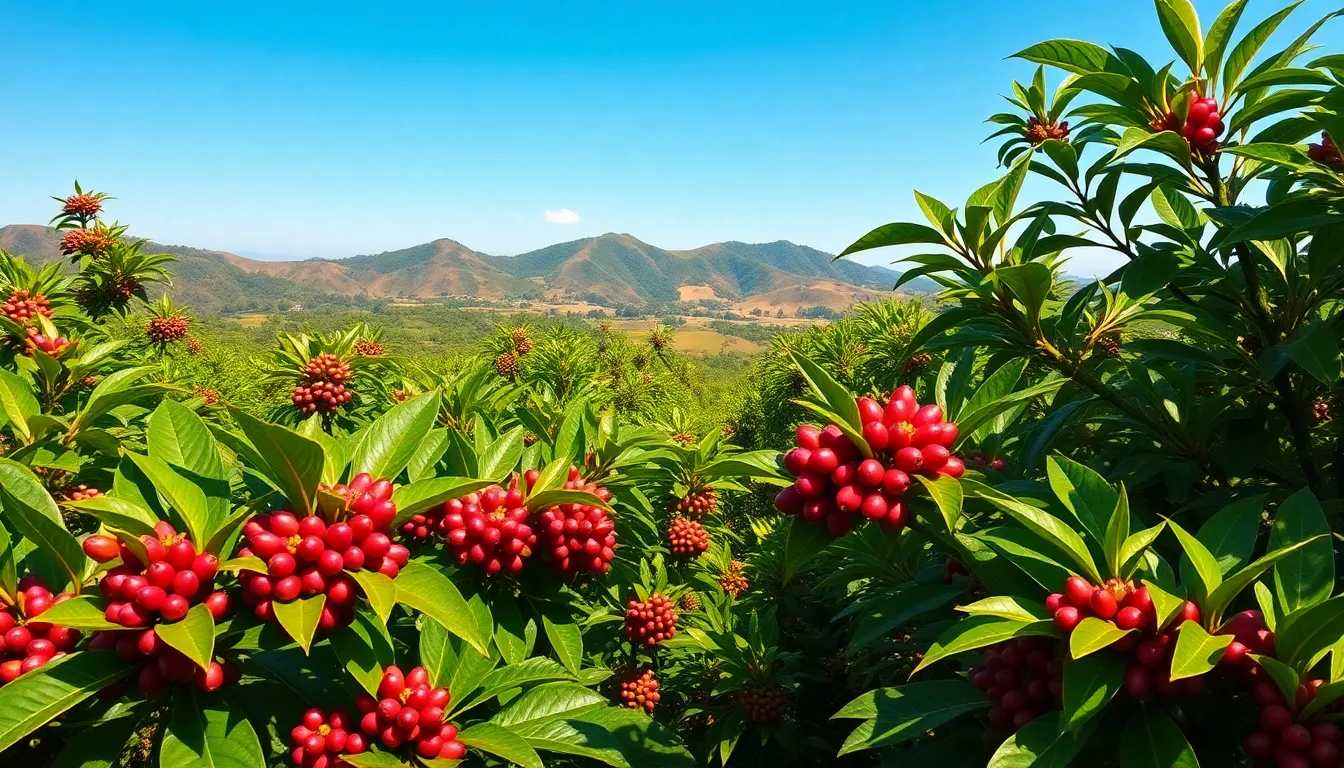Table of Contents
ToggleImagine sipping a cup of coffee that tells a story. Single origin coffee does just that, bringing the unique flavors and aromas of its specific region right to your taste buds. It’s like a passport to the lush coffee farms of Ethiopia or the highlands of Colombia, all without the hassle of airport security.
What Is Single Origin Coffee?
Single origin coffee refers to coffee sourced from a specific region or farm, showcasing unique flavors tied to its origins. This type of coffee allows drinkers to experience a direct connection to the geographical area it comes from. Distinctive climate, soil, and cultivation methods contribute to the diverse flavor profiles found in single origin varieties.
Regions like Ethiopia, Colombia, and Costa Rica are famous for their single origin coffees, each known for specific tasting notes. Coffee from Ethiopia often features bright acidity with fruity and floral undertones. Colombian coffee, on the other hand, typically presents a smooth, balanced flavor with hints of caramel and nut. Different areas yield distinct drinking experiences, making single origin coffee stand out.
When selecting single origin coffee, consumers can explore various roast levels. Light roasts maintain the coffee’s original flavors, allowing regional characteristics to shine. Dark roasts develop a deeper, often bittersweet profile, highlighting the roasting process rather than the origin. Each roast style influences the tasting experience.
Brewing methods also impact flavor extraction. Pour-over techniques emphasize clarity and brightness, while French press methods can enhance body and richness in the cup. Adjustments in grind size, water temperature, and brew time allow drinkers to tailor their coffee experience.
Exploring single origin coffee leads to understanding and appreciating the intricate nuances of flavor. This exploration offers a deeper connection to coffee culture and a greater understanding of global coffee farming practices. Each cup serves as an authentic representation of its origin, inviting a journey through taste.
The Importance of Origin

Origin significantly influences the flavors and sustainability of single origin coffee. Understanding the source of coffee beans helps consumers appreciate each unique profile.
Flavor Profiles
Flavor profiles vary widely among different regions. Ethiopian coffees often feature bright acidity with fruity undertones like berry and citrus. Colombian coffees provide a smooth, balanced flavor profile, commonly presenting hints of caramel and nut. Costa Rican beans may deliver notes of chocolate with a crisp finish. Each region’s distinct climate and soil conditions shape these flavors, allowing for unique tasting experiences.
Sustainability Practices
Sustainable practices play a crucial role in the production of single origin coffee. Many farms engage in shade-grown techniques, preserving biodiversity and improving soil health. Direct trade relationships often benefit local farmers, ensuring fair compensation for their labor. Organic farming methods also reduce reliance on harmful pesticides, promoting environmental health. These practices not only protect ecosystems but enhance the quality of coffee, resulting in a product that reflects responsible sourcing and production.
How to Brew Single Origin Coffee
Brewing single origin coffee enhances its distinctive flavors and aromas. Different methods showcase these unique characteristics, providing a tailored tasting experience.
Recommended Brewing Methods
Pour-over stands out for its ability to highlight delicate flavors. French press offers richness and full-bodied extraction. AeroPress introduces versatility with quick brewing and less acidity. Espresso captures complex notes but requires precise technique to achieve balance. Cold brew produces a smooth, refreshing cup by steeping coffee grounds in cold water for an extended period. Choose the method that best complements the specific coffee’s profile for optimal enjoyment.
Tips for Optimal Flavor
Grind size plays a crucial role in flavor extraction. For pour-over, a medium-fine grind enhances clarity, while French press benefits from a coarse grind. Water temperature should remain between 195°F and 205°F to prevent bitterness. Use a coffee-to-water ratio of 1:15 for balanced strength. Allow coffee to bloom for 30 seconds after adding hot water to release gases, ensuring richer flavors. Fresh coffee beans yield better results, so store them in an airtight container away from light and moisture. These steps promote a vibrant and satisfying experience with single origin coffee.
Popular Single Origin Coffee Regions
Single origin coffee features distinct regional flavors that resonate with coffee enthusiasts. Regions like Ethiopia, Colombia, and Guatemala stand out for their unique taste profiles.
Ethiopia
Ethiopian coffee often boasts bright acidity and vibrant fruity undertones. Known for its complex flavors, this region produces beans that reflect the diverse microclimates found throughout the country. Yirgacheffe and Sidamo are notable areas, each delivering distinct citrus and floral notes. Many coffee lovers appreciate over ice or brewed as a pour-over, where the intricate flavors truly shine. The cultivation methods in Ethiopia emphasize traditional practices, enhancing both flavor and sustainability.
Colombia
Colombian coffee is celebrated for its smooth and balanced profile. The country’s varied geography contributes to exceptional tasting notes of caramel and nut. Huila and Antioquia are popular growing regions, recognized for producing beans with rich body and sweetness. Various brewing methods, including French press or espresso, allow drinkers to savor the well-rounded flavors. The Colombian focus on quality, paired with sustainable practices, ensures a superior product that supports local farmers.
Guatemala
Guatemalan coffee is renowned for its rich chocolate undertones and bright acidity. Regions like Antigua and Cobán offer a diverse range of flavors, from sweet and fruity to earthy and bold. Each coffee variety reflects the unique volcanic soil and altitude of its region. Fans of this coffee often enjoy it brewed as a cold brew or AeroPress, where the unique characteristics are highlighted. The sustainable farming practices used in Guatemala promote healthy ecosystems and enhance the quality of each cup.
Single origin coffee offers a rich tapestry of flavors that transport drinkers to the heart of its origin. Each cup tells a story shaped by the unique climate and cultivation methods of its region. By choosing single origin varieties, coffee lovers not only savor distinctive taste profiles but also support sustainable practices that benefit local farmers and ecosystems.
Exploring different brewing methods enhances the experience, allowing enthusiasts to appreciate the intricate nuances of each coffee. Whether it’s the bright acidity of Ethiopian beans or the smooth richness of Colombian coffee, every sip provides a connection to the land and the people behind the brew. Embracing single origin coffee is more than just a choice; it’s an invitation to discover the world through a cup.




